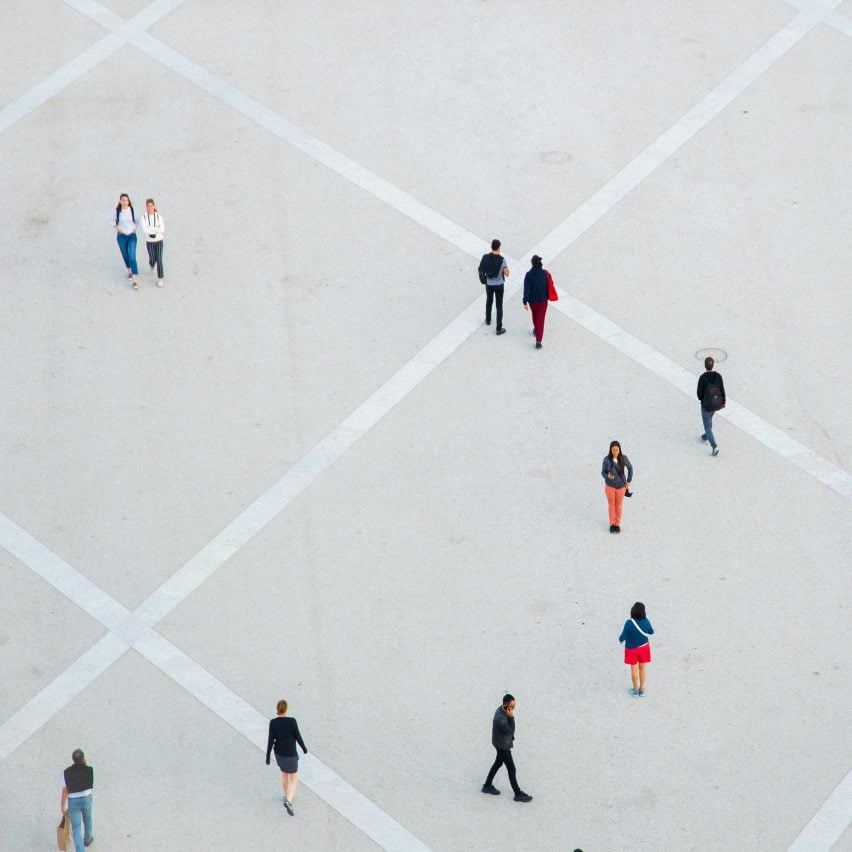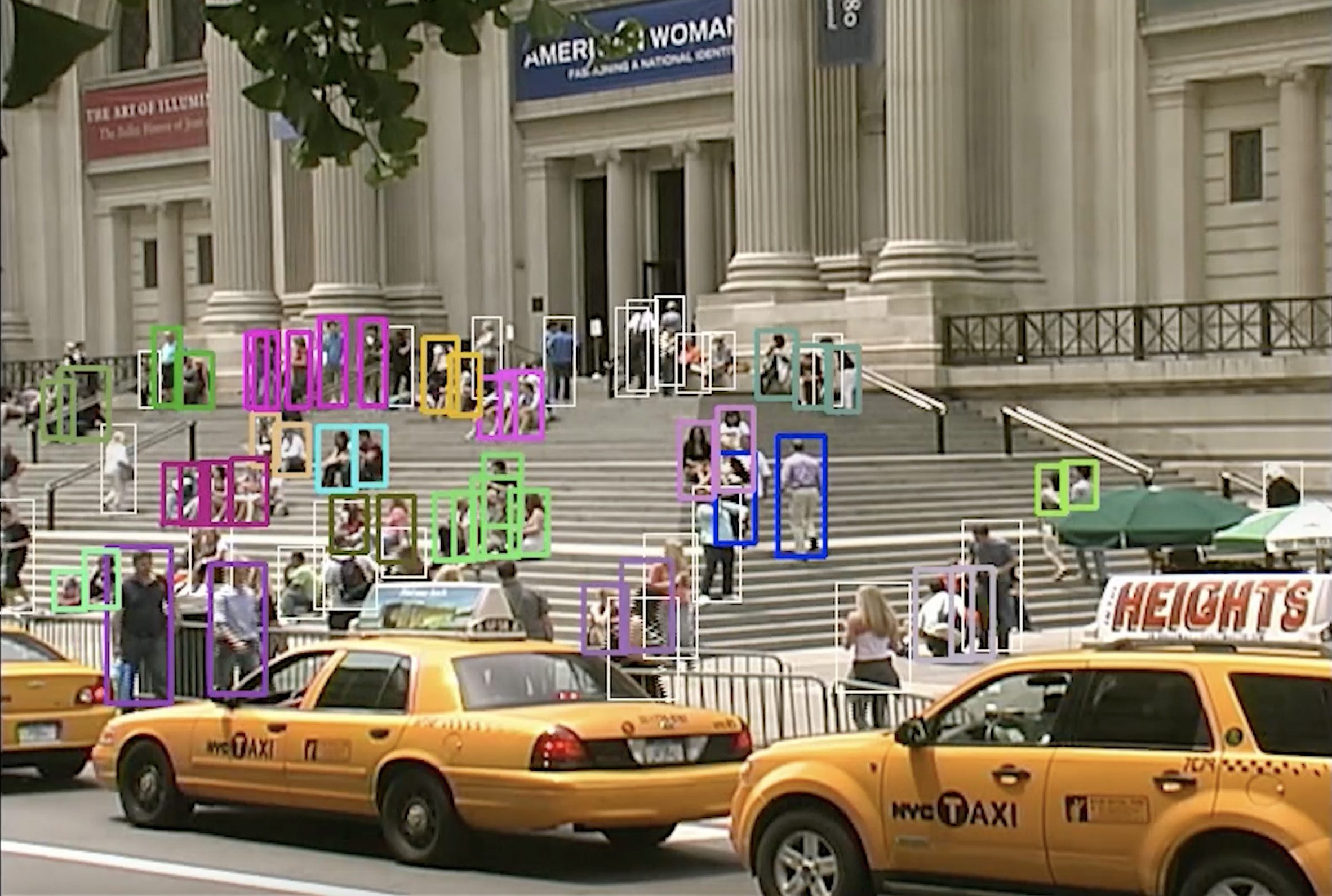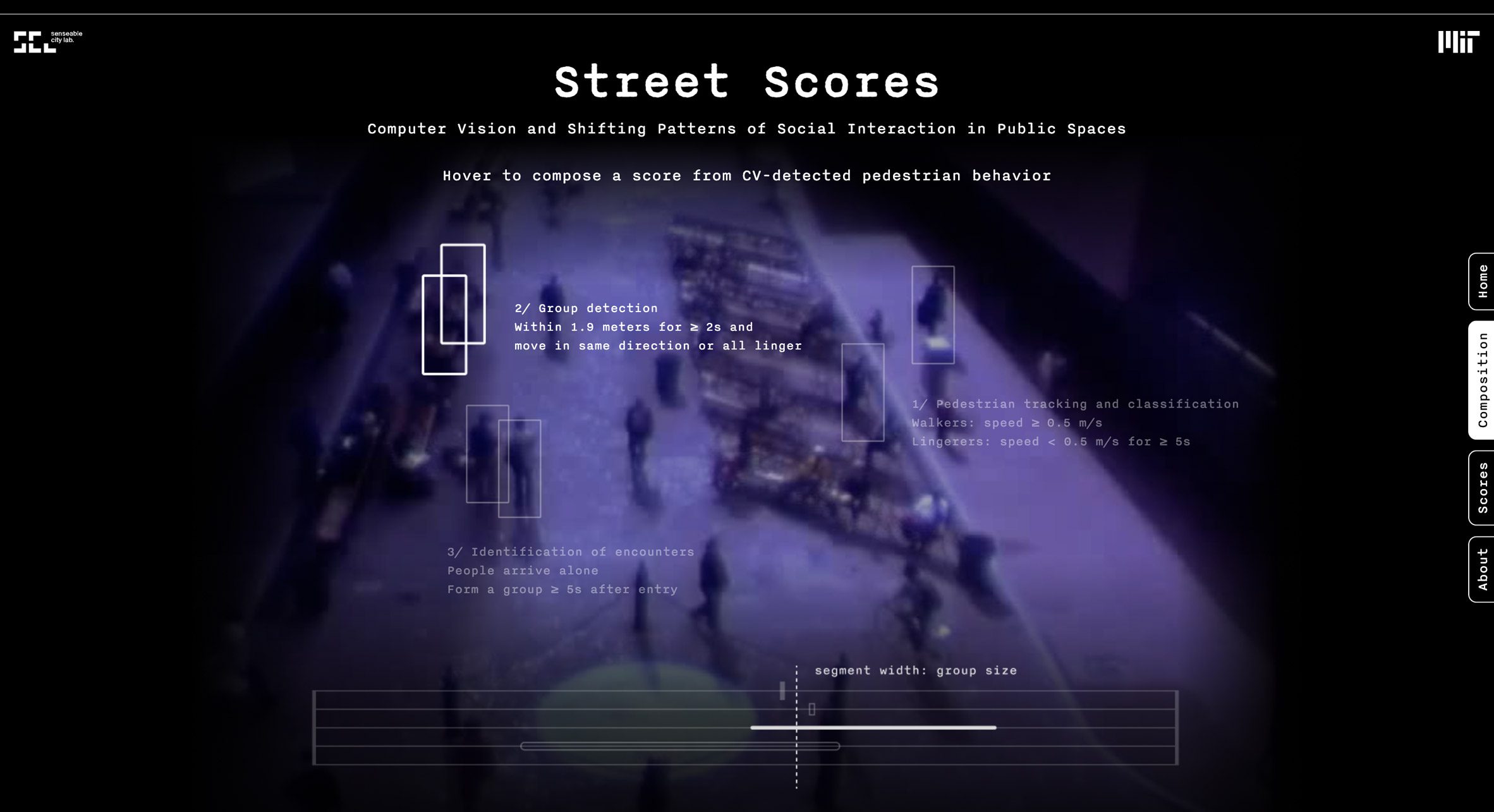
Pedestrians are walking 15 per cent faster and stopping to linger 14 per cent less than they used to, according to a study from MIT’s Senseable City Lab that hopes to guide the design of public spaces.
Using computer vision and artificial intelligence to analyse videos of four public spaces across three American cities, the study found that walking speeds rose notably between 1980 and 2010, while instances of people lingering or interacting with others fell.
According to the researchers, the study suggests that urban designers will have to work harder than in previous decades to encourage people to slow down and have positive social experiences.
MIT’s Senseable City Lab used AI to analyse video footage of public spaces
“This trend suggests a growing perception of city streets as corridors for movement rather than spaces for social interaction,” the researchers wrote in a paper published last week in the peer-reviewed journal Proceedings of the National Academy of Sciences (PNAS).
“These findings highlight a changing urban dynamic, where efficiency increasingly shapes public space usage, potentially impacting social connections and the community-building role of these environments.”
The pattern was observed in all four sites analysed – Downtown Crossing in Boston, Chestnut Street in Philadelphia, and Bryant Park and the steps of the Metropolitan Museum of Art in New York – suggesting the change is pervasive across American cities.
The researchers’ approach involved comparing timelapse video footage captured in these spaces by influential urbanist William H Whyte in 1980 with similar footage shot by sociologist Keith N Hampton in 2010 after he had worked on digitising Whyte’s archive.

The researchers used AI models to distinguish people from other objects in the videos, measure their walking speed and trajectories, and detect whether they were forming groups.
The models calculated that over those 30 years, the median walking speed rose from 1.25 to 1.41 metres per second, equivalent to a 15 per cent increase, and the number of people stopping to linger – defined as reducing their speed to below 0.5 metres per second – fell from 43 per cent to 26 per cent.
In 1980, one in 20 people interacted with those around them, while in 2010, it was just one in 50.
Lead researcher Arianna Salazar-Miranda, who started the project at MIT’s Senseable City Lab and has since moved to Yale, told Dezeen that technologies like AI and computer vision have great potential to help architects and designers understand how public spaces work.
“This was also the goal of William H. Whyte’s groundbreaking work in the 1970s,” she explained. “He painstakingly annotated hours of Super 8 footage by hand.”
“He famously said: ‘The crux is evaluation. Taking the film is easy… even fun. But when you start figuring out, frame by frame, what the film has to tell… the process can be enormously time-consuming… That’s where it all breaks down’.”
Instead of Whyte’s manual approach, the researchers were able to analyse 638 hours of video footage using AI, and Salazar-Miranda suggests the technology could allow researchers to examine thousands of more hours in an instant.
“This opens up new ways to understand how people move, gather and interact in public space, and I hope it can help us design environments that better support social interaction,” said Salazar-Miranda.

In their paper, the researchers identify a number of potential causes for the observed changes, ranging from gentrification and rising affluence to mobile phones eliminating the need to wait for friends at a public landmark.
They also speculate that the introduction of coffee shop culture to the US via Starbucks may have drawn some groups into congregating in these more “comfortable” private spaces instead.
They conclude that thoughtful design can counter the trend for isolation and hurriedness in public space, noting that the Metropolitan Museum steps remain a place with a high rate of lingering, even if it is reduced compared to previous decades.
Salazar-Miranda and her collaborators at the MIT Senseable City Lab, Harvard and the University of Hong Kong will next take their research to Europe, with a plan to survey 40 different public squares.
MIT’s Senseable City Lab is headed by Carlo Ratti, who is also the curator of this year’s Venice Architecture Biennale and featured this research in the exhibition.
“Public space remains more essential than ever,” Ratti told Dezeen. “As our lives increasingly move online, there is a real risk that public life gets confined within algorithmic comfort zones – where we scroll past discomfort and mute disagreement.”
“In an age of polarisation, public space stands as one of the last bastions of democratic coexistence.”
The Senseable City Lab has a focus on smart cities and technology-informed approaches to urban design, with past projects including a sewerage-dwelling robot that spots disease outbreaks and an analysis of the architecture in Brazil’s largest favela.
The top photo is by Ryutaro Tsukata.
The post MIT finds people walking faster and lingering less in public space appeared first on Dezeen.